Should I replace or repair my HVAC unit?
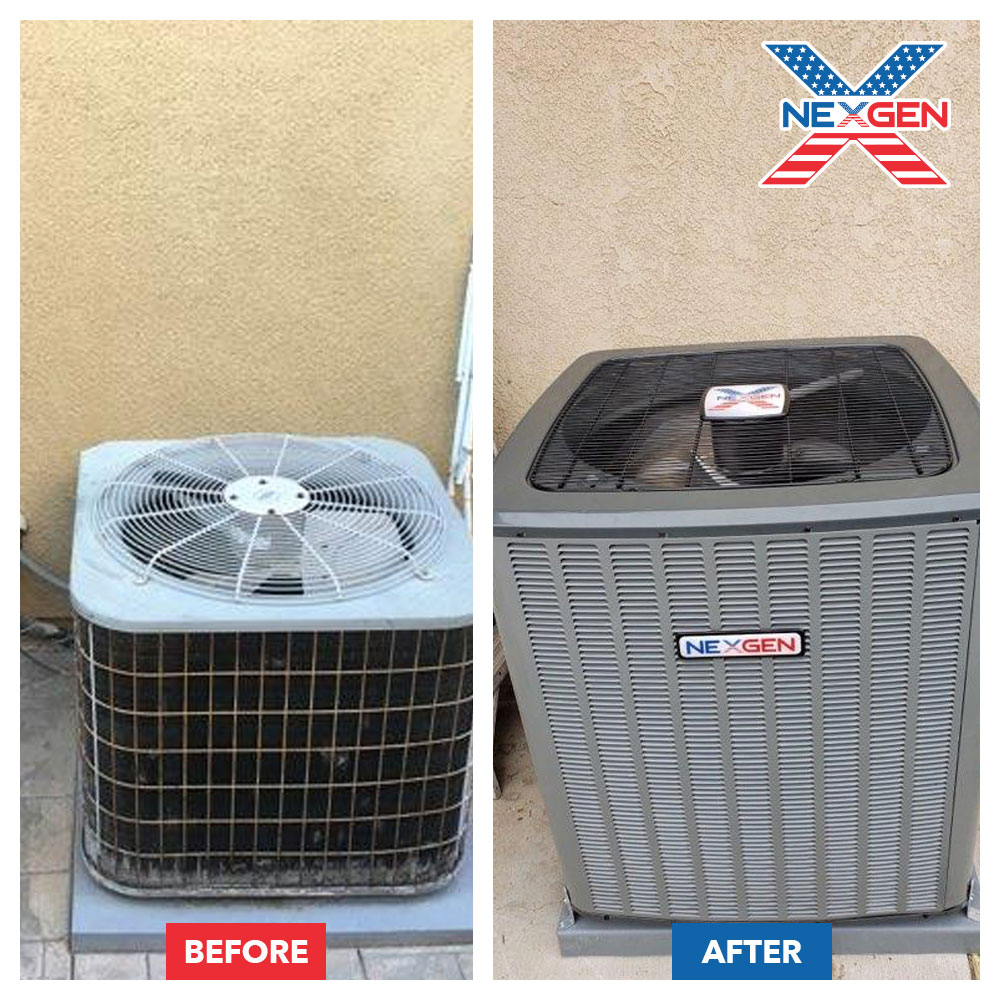
Figuring out whether an AC unit needs a repair or replacement is tough. If your unit is not more than one decade old and performing well, then you can consider repair. However, longevity is not the sole determining factor.
Performance, regular maintenance, and a few other factors can help you to decide either replacement or repair is due. You can call for an AC repair in Inland Empire before considering a costly replacement.
You can also go through these signs to make the right decision.
When to Replace
If your air conditioning unit is more than one decade old and needs frequent repair, then it is better to go with the replacement. When it is more than 10 years, you will have to spend more on repairs or part replacement. Also, energy efficiency will be compromised. In some conditions, it might not offer the required coolness as well.
If there is an unexplained hike in maintenance expenses, then you will have to think of a replacement. Instead of spending more on repair or energy, you can take the call and go for the replacement to get long-term benefits.
Here are some signs that indicate the need for a replacement.
- Leak: You cannot repair seals or tubes if your condenser starts to leak. In that condition, you will be left with only one choice which is a replacement.
- Blockage: Blockage is a sign of a severe problem. When there is a blockage in your system, you can consider replacing the condenser. You might need to replace some other expensive parts like the compressor depending on the damage. Instead of investing in parts, you can think of a replacement, if possible.
When to Repair
In most of conditions, you can go with the repair, especially when your system is new. An air conditioning service in Inland Empire can help you with the right solution. You might not have to spend more on repair if the issue is minor. You can consider repair when it has a good SEER rating. Also, when your system is less than ten years old, you can fix most of the issues.
If your system is offering the required coolness without increasing the monthly energy bill, then you should not go with a replacement. The same is about frequent repairs. If it does not require frequent and costly replacement, then you can save on replacements.
Here are some signs that indicate your AC unit needs repair.
- Run Capacitor: You can easily repair a capacitor. Take the help of technicians to fix it fast.
- Condenser Switch: It is easy to repair a condenser switch. If you find issues with the condenser, check the switch first to know the cause. You can easily repair or even replace it without spending much.
When you notice that your AC system is not performing up to expectation, check it with an air conditioning repair in Inland Empire to find out the cause. Follow the above tips to decide if it is time to repair or replace your system. If you do find yourself in need of a repair or replacement, NexGen is here to help. Our experience and skills make us the perfect choice for your HVAC unit needs in the inland Empire. Call us today and let us help you decide what would be best for your unit.
Call NexGen Today
Our expertise and commitment to customer satisfaction make us the leading HVAC company in Southern California. To learn more about our equipment, services, and protection plan,
book an appointment online or call
888-277-0415.
How to Get the Most Out of Your AC System in Northridge
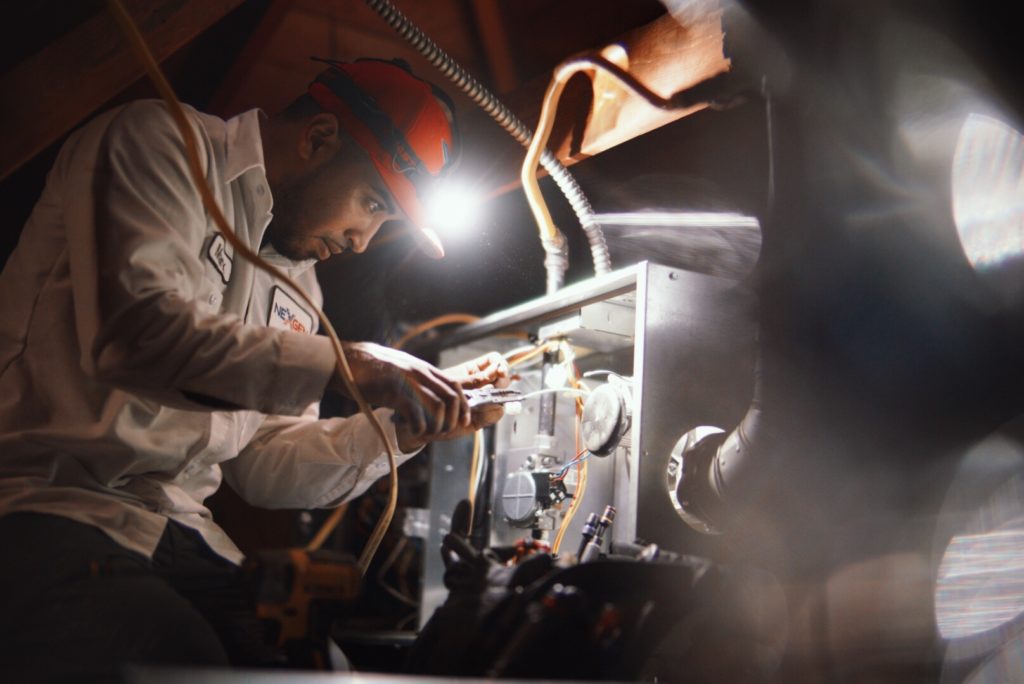
Are you one of the lucky residents that get to call Northridge home? Living in Northridge has so many advantages that the residents get to utilize! The city of Northridge is known for its friendly communities, wonderful parks, and even better schools! The weather in the area is always sunny and comfortable, it’s no wonder so many people choose to live in the area! The city is referred to as the “Jewel of the San Fernando Valley” and it’s easy to see why! The residents get to have the best of both worlds, living in Los Angeles without having to deal with all the hassles of city life, having the comfort and perks of a suburban community.
Wonderful Weather Year-Round
Even though the weather seems to be pretty perfect year-round, Northridge has their days of gloom, as well as their days of scorching heat. On these hot days, most residents tend to utilize their air conditioning to offset the uncomfortable temperatures outside. Having a working air conditioner and a comfortable home when you go come home from a long day of work is definitely one of the best feelings when it’s very hot outside. Here are a few key tips and tricks to help you get the most out of your air conditioning system this summer:
Replace your Filter Regularly
The filter for your air conditioning system is one of the most important pieces of the entire system. The filter allows for the system to receive the proper clean air it requires. When a filter begins to get clogged with debris, the amount of air flowing through the system diminishes greatly. This can cause the unit to work much harder to produce the same amount of cool air. Sometimes this can cause the system to break! Be cautious and replace your filter every 3 months to assure a clean healthy air conditioning system. We recommend signing up for an air filter delivery subscription, this will remind you to replace your filter frequently because you will receive filters in the mail every so often.
Service your Unit Frequently
The second biggest tip we can give to the Northridge community is servicing your unit regularly! Much like a car, it’s important to take care of any trouble when it’s still minor. This will avoid the problem increasing in magnitude and save you an expensive repair bill down the road. Having a professional evaluate your system will ensure that any problems will be caught before they become major issues. Regularly servicing the equipment helps to extend its life and ensure that it will stay in great condition for as long as possible. Our experts at NexGen only suggest the best possible solutions for your HVAC problems and our professionals do a great job keeping you, the customer, happy. Our goal is to provide our customers with optimal home comfort solutions paired with efficiency and safety.
Clearing Blocked Vents or Airways
Just like a clogged air filter, a blocked vent or airway can cause major issues with your HVAC system. It is best to check for blocked vents or airways every so often, but a great time to also check is when you run your air conditioning for the first time since winter. People usually go pretty long from when they last used their furnace to when they first use their air conditioner. During this time, things can move around in your system and that can obstruct the vents that provide cool air to your home. This can cause the unit to overwork and break. Also, if there is any furniture blocking the vents, take the time to rearrange the layout. Make sure that air can freely flow through the room!
Keep the Air Conditioner On
When those cool summer days roll through, it is actually best to leave your system on. When you turn your system off, it takes an excessive amount of energy to get the system up and running again once you turn it on again. If a cool spell rolls through, we recommend setting your thermostat to 78 or 79. That way, your system won’t run but it will be ready once that heat wave rolls back into town! This allows for the unit to work less hard to get the house back down to the desired temperature.
Use Ceiling Fans
One thing many people forget to do is using ceiling fans! Ceiling fans are especially good at moving cool air where it belongs! Running your ceiling fans while your air conditioner is on can actually allow for better airflow in the home, moving the hot air upwards while allowing cool air to stay where it belongs.
Close Vents Strategically
Have you ever had an issue where certain rooms are not receiving a proper amount of air while others seem to get a whole lot? This usually is an issue that arises around having your system incorrectly sized for your needs. But there is one tip that can help you get the air you want and need! Try strategically closing air vents in different areas of the house. If you are hanging out upstairs and are not receiving air, try closing some vents downstairs. This will allow for more air to flow upstairs, which can direct the air to where you want it to be! Sometimes this trick takes some practice to understand which vents to close to best adjust air flow, but practice makes perfect and in no time you’ll get the hang of it!
Condenser Needs Cleaning
Just as you dump your trash, your air conditioner condenser needs to be cleaned as well! Trash, sticks, dirt (you name it!) can get stuck to your condenser. It is best to frequently check to make sure everything is all clear! You can even use a garden hose to clear off the debris. Just be extra cautious with the fins!
These are just a few tips you can use to safely get the most out of your air conditioners! Put these tips into practice and see just how efficient your air conditioning system can get!
Call NexGen Today
Our expertise and commitment to customer satisfaction make us the leading HVAC company in Southern California. To learn more about our equipment, services, and protection plan,
book an appointment online or call
888-277-0415.
5 HVAC Tips for Fall
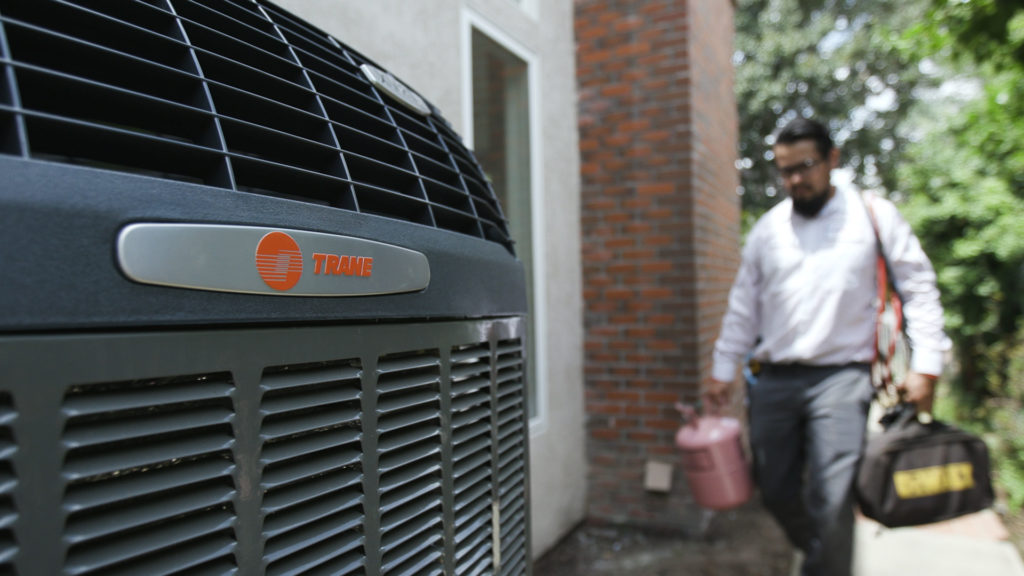
As the weather changes and you go from enjoying warm summer days to trying to survive those frigid fall nights there is no doubt that you will begin using your heater much more frequently. We all know there is a direct correlation between heater usage and power bill costs but there are a few tips you could use to diminish some unnecessary costs. There are a few things most people are losing money on that are solved with a quick fix. We will discuss a few things to help you save money, as well as a few other tips to help you be a safe, happy homeowner.
Air Filter
One of the easiest things you can do to improve your air quality and furnace efficiency is to remember to replace your air filter monthly. Most people ignore this simple maintenance task but it will change everything! If your family is one that struggles with allergies or maybe has pets, changing your filter is crucial to assuring quality air is being sent through your air vents. The US Department of Energy states that changing your air filter monthly can save an average of around 5 to 15 percent in power bill costs yearly. This can be a lifesaver for some people's pockets but also will keep everyone living under your roof healthy and happy knowing they are breathing quality air.
Thermostat Awareness
Using a programmable thermostat can save hundreds of dollars each year. If you are a family who spends most of their time away during the week, it is crucial to have a programmable thermostat that keeps your home at a constant temperature. But not just any temperature, when you are away you should set your thermostat at a lower temperature to assure your furnace will not turn on for no reason. If you aren’t at home there is no reason to be blasting the heat. As routine maintenance, you should try to get your thermostat checked for accuracy whenever you have an HVAC team member around. A faulty thermostat can cause your heater to run because it is reading the incorrect temperature. This can burn a hole in your pocket if this issue is not noticed quickly.
Window and Door Insulation
As a homeowner, one of the most irritating things is knowing you have a leak because of faulty windows or doors. This can be one of the leading causes of high power bills, if air can come in then it can go out as well. Try using a door insulator that slides onto the bottom part of the door, it can kill any sort of draft you may have. Any home improvement store also sells window insulators, they can come in many shapes and sizes. If your windows are very leaky you may want to invest in window plastic covers that cover the entire window frame. They will save you A LOT of money during the winter by creating a barrier to block any sort of draft.
Carbon Monoxide Scares
If you own a gas powered furnace, a carbon monoxide alarm is a must. These heaters can become faulty and exhaust dangers carbon monoxide gas into your home. It is crucial to use an alarm to help you detect any scares. This gas is known to be odorless so it is best to get help.
HVAC Maintenance
To assure your heating and air conditioning is working at the highest capacity make sure to schedule routine maintenance checks with your local NexGen Air staff. This will give your furnace the longest lifespan possible as well as keep your systems working at maximum efficiency, having a huge effect on your entire home.
Call NexGen Today
Our expertise and commitment to customer satisfaction make us the leading HVAC company in Southern California. To learn more about our equipment, services, and protection plan,
book an appointment online or call
888-277-0415.
Electric or Gas Furnace?

One of the biggest questions regarding furnaces is which type is best? Electric or Gas? Well, there are many factors that weigh in on this discussion regarding the two. They both have their pros and cons, but the biggest question of all, which one is right for you? There are many factors you need to take into account when deciding which one is the best. These factors include cost, efficiency, size, durability, as well as safety concerns, installation requirements, and housing requirements. Some people do not have the availability to debate the two because of their living situation and location. Natural Gas is the most popular fuel source for the United States but some areas are not able to use this because of location restrictions.
Pros of Electric Furnaces
- Electric Furnaces tend to be safer because there is no need for natural gas to create heat energy.
- They are cheaper to purchase and install than gas-powered furnaces.
- Can be all you need for both air conditioning and heating your home year-round.
Cons of Electric Furnaces
- Electric tends to be a tad more pricey on your monthly energy bills.
- Electric furnaces only create original heat, does not transfer heat.
- When cold temperatures hit, electric tends to work a little harder to maintain desired temperatures.
Pros of Gas Furnaces
- Gas is a much cheaper utility to use for your heating power source.
- Creates and transfers powerful heat energy because of the gas-powered furnace.
- Pairs better with an air-conditioner because will use an alike power source.
Cons of Gas Furnaces
- Can be dangerous because of the gas supply to the house.
- Carbon Monoxide could be more prominent with the gas-powered furnace, must be aware of air quality in the home at all times.
- More costly upfront costs to purchase and install the unit.
Cost Comparison
The upfront costs of Electric Furnaces tend to be cheaper than gas furnaces. But over time electric furnaces typically end up being more costly than gas because the cost to run an electric furnace is a tad more pricey than gas. The electric furnace also uses a little more energy to heat your home. So it might be worth the upfront investment for the gas furnace because it will save your pockets over time.
Efficiency and Effectiveness
A gas-powered system is less expensive to operate because of the price difference in the utility and a few other factors. Gas furnaces are more effective when it comes to heating an entire home in a cold weather area. Gas tends to be more effective in heating a home because of its ability to create and transfer heat energy. This is why electrically powered furnaces tend to be more costly to operate, especially in cold climates. So if you live in a cold area, a gas furnace might be the right choice for you. If you do not live in a cold area and only see yourself using your heater once in a while then electric may be the choice for you! It is cheaper to purchase and install, as well as safer to operate.
Call NexGen HVAC & Plumbing
Our expertise and commitment to customer satisfaction make us the leading HVAC company in Southern California. To learn more about our equipment, services, and protection plan, book an appointment online or call 888-277-0415.
5 Things to Consider When Buying a Furnace

Furnaces are an essential part of your home because they provide heat for your home during the chilly winter months. When the time comes to buy a new furnace, it is best to know what things you need to consider. There are many factors that weigh into this decision, depending on your needs, you may prefer one type of furnace over another. Some of these weighing factors include efficiency, size, power source, and brand type. We will discuss these different factors below.
HVAC System Types
Home heating systems come in two common types, packaged systems or split systems. Split systems are known for having two separate units for heating and air conditioning. As the times change more and more people are moving towards the packaged system. It is a little more space conscious and allows the homeowner to only have to manage one system for both air conditioning and heating.
Your Heating Unit's Fuel Source
There are a few options available when it comes to the fuel source for your new furnace. The most common types are gas, electric and oil. Of these three, gas and electric are by far the most commonly found. Oil powered heaters are very outdated and are mostly found in older homes around the country. Gas powered furnaces are great for areas that tend to have freezing temperatures because they are typically a little cheaper than electric to operate for long hours.
Thermostat Preferences
The key to perfect temperatures throughout your home is thermostat placement. If your home seems to fluctuate in temperature depending on what room you are in, you might want to look into zoning systems. These zoning systems work by using multiple thermostats throughout your home, determining the which parts of your home truly needs heating help. This will reduce unnecessary use of heat in certain parts of your home, in effect reducing your average energy consumption.
Furnace Efficiency
There are many different types of furnaces and all are different when it comes to energy consumption. Depending on the size of your home, you may not need a huge power hungry furnace. This will really be the biggest factor in determining how large of a furnace you will need. Square footage is the biggest factor because you need your furnace to provide heat for the entire home without the need to run for hours on end.
Furnace Warranty
These days most furnace systems come with a good warranty depending on the brand you decide to go with. Frigidaire currently has a 10-year warranty on their products because of their commitment to quality products. Your local appliance store will have all the information regarding warranties.
These are just a few of the top factors involved in choosing your new furnace for your home. Just remember that there are a few more things to think about other than upfront costs when choosing a new heating system. The cost to operate a system can become a huge burden, make sure to weigh all of the top factors before jumping into a decision.
Call NexGen Today
Our expertise and commitment to customer satisfaction make us the leading HVAC company in Southern California. To learn more about our equipment, services, and protection plan,
book an appointment online or call
888-277-0415.
Broken Furnace? Here’s What You Should Do
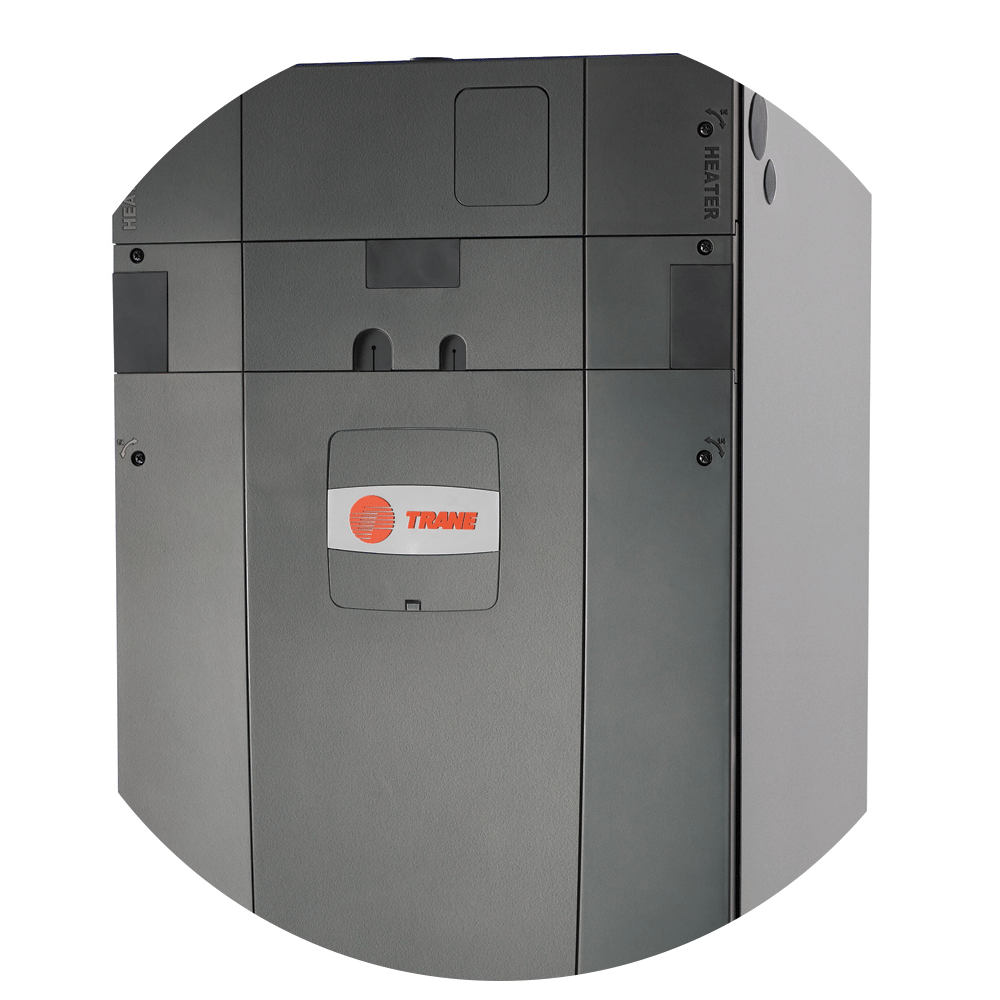
Did your heart stop working and you don’t know how to fix it? There are a few things that could stop your heat from working and we are here today to give you a few tips to diagnose your main problem.
Before you call any sort outside help, you should check to see if your furnace is actually broken or temporarily disabled because of a few fixable issues. Make sure to keep reading to discover the root problem and how you can fix them.
Air Vents
First, you must check the most obvious thing, is air flowing through your air vents into your rooms? You may need to grab a neighbor's ladder or the nearest chair depending on your ceiling height. Reach over to your vent and check to see if you feel the air. If not, try adjusting the vent angle. If this doesn’t work, see if there could be any debris blocking the vent. Sometimes lint and debris can build up in the vent causing airflow issues.
Check the Gas
Most furnaces are gas-powered and will have a pilot light inside one of the removable panels. Make sure to check the manual for the furnace if it is readily available, it will help you find the gas valve and pilot light areas. First, check to see if the pilot light is lit, if there is a lit flame then this is not the root cause of your issue. Keep reading to discover other ways to fix your heat problem.
Thermostat Issues
A lot of the time heating related issues is caused by a broken thermostat. These can become faulty and break over time. To check to see if your thermostat is working correctly try turning up or down the temperature setting and see if your furnace reacts in any way. If it does you will know your thermostat is not the cause.
Furnace Vents
Most furnaces have vents that are used for exhaust and intake. Check to see if you feel any sort of heat being exhausted from your furnace and clear any lint or debris that could be blocking potential airflow.
Furnace Filters
Changing filters is never something people put on their weekly to-do lists. Dirt and lint can build upon these filters and can cause a lot of issues with airflow. Warm air will not be able to pass through the filter and can cause the furnace to break down. Make sure to change your furnace filters every few months to assure your furnace is receiving proper filtering.
After these few tips hopefully your furnace will be back up and running in no time! If these tips did not get your heater back on, it may be time to call your local NexGen Air. We provide great quality work for a great price and promise to get your house temperature back to normal quickly.
Call NexGen Today
Our expertise and commitment to customer satisfaction make us the leading HVAC company in Southern California. To learn more about our equipment, services, and protection plan,
book an appointment online or call
888-277-0415.
Want to Upgrade Your Apartment's HVAC System?
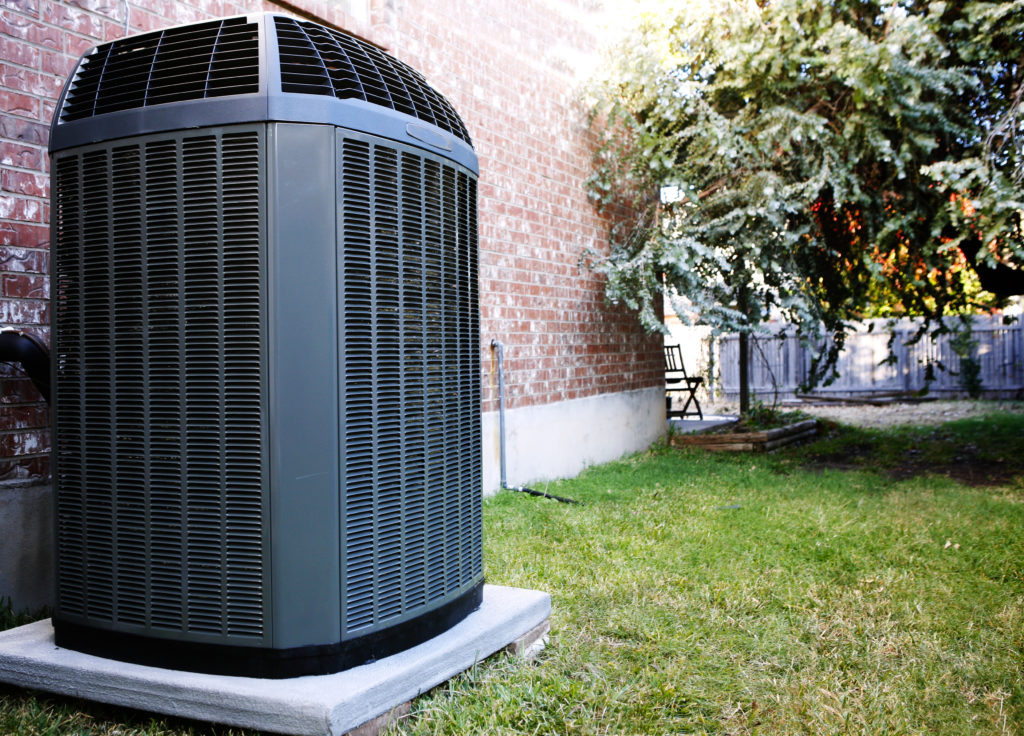
Ultimately, the decision comes down to several factors, from installation and long-term maintenance costs, aesthetics and energy efficiency, as well as the size of the property. Low-rise buildings, for example, tend to have unique needs compared to mid-rise or high-rise developments.
Multifamily HVAC Units
Beyond this, multifamily developments also have unique HVAC requirements, compared to single-family homes. Multifamily HVAC units must deliver:
- Peak load flexibility: It’s difficult to estimate the peak energy demand of a multi-family property. Therefore, the system must be optimized to handle a variety of peak loads.
- Individual comfort controls: Occupants must have in-unit controls, which can be delivered in several ways.
- Ease of maintenance: HVAC units may be contained in-unit or as part of a centralized system. Either way, the system should be designed to be easily maintained.
Ultimately, the question remains: Which systems are the most energy efficient?
Centralized vs. Decentralized HVAC Units
HVAC units for multifamily buildings fall into two categories: Centralized and decentralized systems. Centralized HVAC systems are like a home’s heating and cooling systems. Heat and/or AC are feed from a central location – typically a mechanical room in the basement or in a penthouse of the building. Centralized systems do have a higher cost, and therefore, they’re more common in mid-rise and high-rise properties with many units.
Decentralized units, on the other hand, are compartmentalized. Each unit is treated as its own building, and separate heating and cooling systems are delivered to the individual units. These units are typically considered “self-contained.” Baseboard heat is another type of decentralized system.
Energy Efficiency of Centralized Systems
In general, centralized systems outperform decentralized HVAC systems in terms of energy efficiency. Yet, the higher installation costs may make these systems cost-prohibitive. Common types of centralized HVAC systems include:
- Hot Water Baseboard: These systems deliver hot water from a central location to individual units. Essentially, the hot water flows through the radiator, as the radiator sucks in cooler air and heats it. This type of system is economical to install and are reasonably efficient.
- Two-Pipe Systems: This system includes a central water boiler, as well as a central cooling plant, which is typically on the roof. These systems have two pipes – one for delivering hot or cold water – and one for returning. Therefore, heat and A/C cannot be delivered at the same time. Efficiency is boosted with these systems.
- Four-Pipe Systems: Four-pipe systems utilize similar equipment to the two-pipe system, but since there are four pipes, heating and cooling can be provided at the same time. Therefore, Apartment A can choose heat, while Apartment B can choose to cool. These systems are expensive to install but are well-known for their efficiency.
- Geothermal Systems: One of the most efficient types of HVAC systems, geothermal utilize a water loop buried within the earth to heat or cool the water. This water can then be delivered to individual units with a two- or four-pipe system.
Energy Efficiency of Decentralized Systems
Comparatively, decentralized systems are, on average, more cost-effective to install, but most do not deliver maximum efficiency.
- Electric Baseboard Heat: Baseboard heat is one of the most economical options to install. But these systems are inefficient and carry high operating costs, and they’re only capable of providing heat.
- Wall Unit Air Conditioner: Like baseboard heaters, wall units are cost-effective to install, but they are inefficient. Additionally, these systems typically only provide cooling.
- Packaged Thermal Air Conditioner: A common heating/cooling option used in hospitality developments, PTAC systems are wall-mounted forced air systems units. Generally, these systems have shorter life cycles, and they aren’t very efficient.
- Self-Contained Systems: These are forced air systems that deliver heating and cooling an individual unit. Heating and cooling equipment is installed in each individual unit, either in a closet or mounted to an exterior wall. In terms of decentralized HVAC units, the self-contained systems offer the best efficiency.
Additional Tips for Developing Energy-Efficient HVAC Systems
Ultimately, your choice of HVAC unit will set the standard for the system’s efficiency, but there are additional steps that can be taken as well. For example, properly sealing heating and cooling ductwork can instantly optimize a system. Additionally, improving the insulation of the building envelope can reduce the system’s overall heating or cooling load.
Call NexGen Today
Our expertise and commitment to customer satisfaction make us the leading HVAC company in Southern California. To learn more about our equipment, services, and protection plan,
book an appointment online or call
888-277-0415.
Why does ice form in a ductless mini split AC?
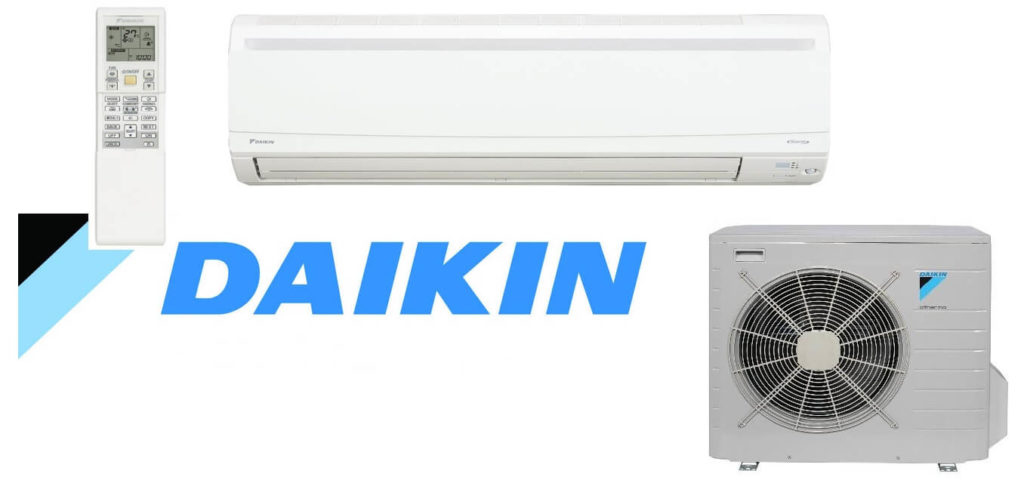
If your air conditioner does not seem to be working as well as it should, your natural first reaction is to go out and look at the unit to see if there is anything you can do quickly to correct the problem. Of course, you cannot assess the situation unless you know what you are looking for. For instance, if you see ice forming on the condenser coil or anywhere else on the air conditioning system, you will know you found the likely source of the problem.
Low Refrigerant Levels
Ice can form in your air conditioner for a number of reasons. The most common one is that your refrigerant levels are low. The reason a lack of refrigerant can cause this ice buildup is due to what refrigerant itself is. Refrigerant in part transfers heat from the indoor coil and once warm moves to the outside coil where it dissipates heat into that coil. This cools yours home, when there is not enough refrigerant it begins to move more quickly through the system. This means that the heat transfer is not happening. Since this refrigerant is contained in a closed system, a deficiency in refrigerant means that there must be a leak somewhere in that system. Only a certified professional can refill your refrigerant and determine where the leaks are in the system to make the necessary repairs.
Lack Of Airflow
Another reason that ice can develop in your air conditioner is because the air is not flowing fast enough through the system and across the coils. This can happen because of a problem with the fan or because there is an actual physical impediment to the air flow. This lack of airflow is most commonly caused by a buildup of dirt between the fins of the coil. Regardless of the reason, the ice will form because without adequate air flow the condenser coils will get too cold.
These coils are typically kept just above freezing by the constant flow of air across them. When the air passes by them at this temperature, the moisture from the air condenses on the surface of the coil. But because the coil is not quite freezing, the water then runs down into a collection pan. When the coil is too cold, however, the moisture from the air will freeze on the coil before it can run off.
This ice actually manages to insulate the coil and keeps it from properly cooling the air or removing any additional moisture. If left unattended, the ice in your central air conditioning system can cause real damage to the unit. Plus, it is not allowing the air conditioner to do its job and cool your house down. So, if you notice any amount of ice at all beginning to form on any part of your air conditioner, be sure to call for professional service right away.
Call NexGen Today
Our expertise and commitment to customer satisfaction make us the leading HVAC company in Southern California. To learn more about our equipment, services, and protection plan,
book an appointment online or call
888-277-0415.
Can HEPA filters Stop Allergies?
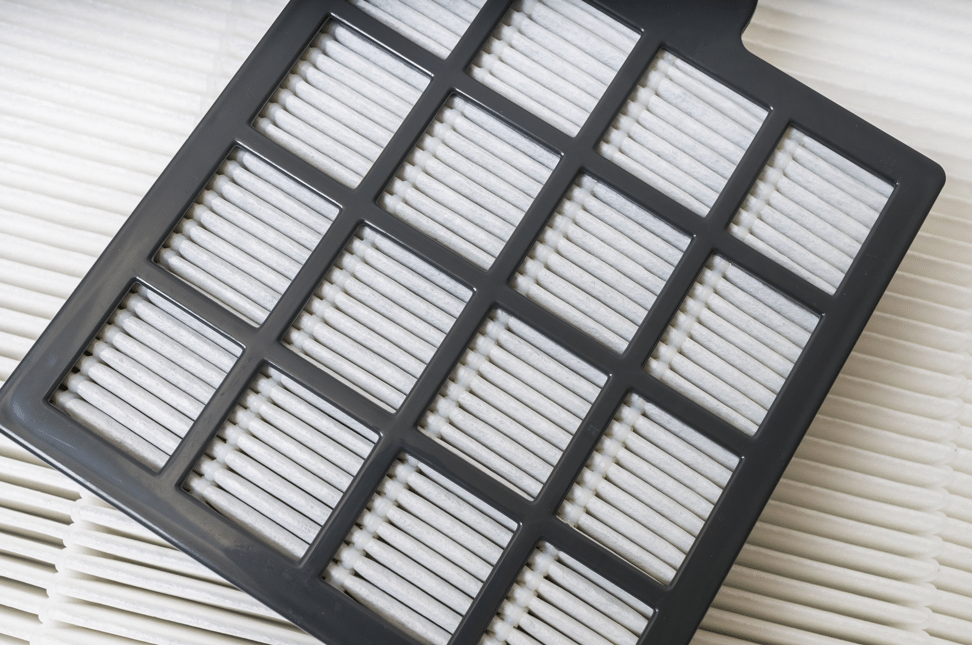
Flowers are blooming, the grass is green and lush, and trees are bursting with new leaves… Don’t you just love this time of year?
Not so much if you have allergies.
When the pollen count is out of control, all you want to do is hide in an air-conditioned room until fall. Unfortunately, that probably won’t help.
You might think your air conditioning system will filter out all those nasty allergens from the air, but without the right air filters for allergies, you’ll still be sniffling and sneezing your way through the season.
And it’s not just pollen you need to worry about! The summer heat and humidity make the conditions ripe for the growth of mold and mildew, which can also bring on allergy symptoms.
Learn the facts about choosing the right air filters for allergies, as well as other HVAC maintenance tips that can reduce your suffering this season.
Fact #1 About Air Filters for Allergies:
Regular HVAC filters are intended to protect the equipment, not your lungs and sinuses.
Many people mistakenly believe that the air filters in furnaces and air conditioners keep dust and allergens out of the air.
That’s not what HVAC filters are designed to do. Their purpose is to keep dust out of the equipment to prevent damage to the system and keep it running efficiently.
While ordinary furnace and ac filters do help to remove some dust from the air (when changed regularly!), they do little to trap the microscopic particles that cause the sneezing and wheezing of allergy season.
That’s why you need special air filters for allergies that are designed to stop those tiny particles.
Fact #2 About Air Filters for Allergies:
Ordinary paper filters can’t trap allergens.
Those paper filters ordinarily used in your furnace and air conditioner are designed to trap large particles like dust that can accumulate on the motor and fans and reduce efficiency. However, particles like mold, bacteria, and certain types of pollen are much smaller in size, so they slip right through the fibers of those regular filters.
That means they get circulated through your ductwork and blown back into your space.
Air filters for allergies are designed to block much smaller particles, so your air stays cleaner. They are called “high energy particulate air filters” or more commonly, HEPA filters.
Because HEPA filters are made from densely packed layers of glass fibers instead of paper, the best ones can trap more than 99 percent of pollen, dust and smoke particles and keep them out of the air you breathe every day.
Fact #3 About Air Filters for Allergies:
All HEPA filters are not created equal.
Unfortunately, it’s not good enough just to look for a HEPA filter for your air conditioner. To get the best results, you need to check the MERV ratings.
HVAC HEPA air filters for allergies are rated on how well they block particles of different sizes. The rating system is called the minimum efficiency reporting system, or MERV. The ratings range from MERV 1 to MERV 12, with the higher number indicating filters that can remove the smallest particles, including many species of pollen.
Your HVAC service professional can help you get and install the best MERV-rated filter for your air conditioning and heating systems. Ideally you want to choose a MERV rating of 10 or higher, which are most effective at blocking the particles that cause allergy symptoms.
Fact #4 About Air Filters for Allergies:
You need to change those filters more frequently than you think.
HEPA air filters for allergies need to be changed more frequently than ordinary paper HVAC filters, especially during high pollen season.
That means changing them at least every other month, and possibly more often depending on your location. An HVAC service expert can advise you on what’s recommended for your equipment and your area.
Fact #5 About Air Filters for Allergies:
The right filter is only half the story.
Using the right air filters for allergies does help to reduce the allergens in the air, but don’t forget about cleaning it from the rest of your HVAC system. If you haven’t had your air conditioning system maintained at least once every year, you’ve likely got quite a bit of buildup on the blower fans and in your ductwork.
Did you know that the air you breathe cycles through your HVAC system about 5 to 7 times each day? If you have not been using the right HEPA air filters for allergies AND not maintaining your air conditioning system, years’ worth of dust, pollen and even mold spores are sitting in on your equipment and in your ducts right now.
Check out our list of 31 HVAC tips to learn about even more air quality and AC tips for your home!
Call NexGen HVAC & Plumbing
Our expertise and commitment to customer satisfaction make us the leading HVAC company in Southern California. To learn more about our equipment, services, and protection plan, book an appointment online or call 888-277-0415.
Do air conditioners bring in fresh air from outside?

Despite our love of its many benefits, the operation of a heating and cooling unit typically remains a mystery, even to its greatest fans. For various reasons, not the least of which are comfort, indoor air quality and ventilation, homeowners are often left to ponder how their system works at bringing cool air into their home…. Does it pull in air from the outside for distribution? Surprisingly enough, that’s not really how it works…
Does my air conditioner take in outside air?
In short, no. Though in split system air conditioning design, commonly heat pumps, part of your system is located outside your home, it does not take in outside air. Outside air is brought into the system from an intake which is generally located by your furnace, but is occasionally its own, separate system. Its main operational purpose of cooling the air in your home is not achieved by moving cool air inside, but by moving unwanted heat out. How does it accomplish this?
Kicking hot air to the curb
To remove the heat from your home, your air conditioner pumps it outside via the heat pump, which can operate in either direction… Moving heat (or thermal energy) outside in the summer, and inside in the winter. How does it manage to capture and release this heat? The air conditioner pump, called the compressor, sucks warm air out of your home, removing it outside with the help of a special fluid, refrigerant. Encased in a closed metal loop, this refrigerant offers a shuttle for this heat exchange.
Keeping it cool
Called the refrigeration cycle, the thermodynamics of this heat exchange include a series of changes in temperature, pressure, and state (liquid/vapor) to remove this heat from your home. This cycle has four stages:
- Heat from the inside the house is absorbed by refrigerant.
- The refrigerant gets hot.
- The heat from the house is transferred outside via the refrigerant, flowing from warmer to cooler to be released/transferred to outdoor air.
- The refrigerant gets cold, and is distributed through the house by other components of the system.
Air Changes
When the refrigerant passes back into the house, it passes through a narrow valve into the evaporator, which is kept at low pressure, meaning when the refrigerant flows in, it quickly expands. This expansion causes the fluid to become very cold. A fan then blows air on it, distributing it via ductwork through your home. This is also part of the heat transference process, because as the cooled air is distributed, air blown onto the evaporator (from return ducts) again transfers heat into the fluid. The refrigerant is then pumped back to the condenser, beginning the cycle again.
Does this mean I need additional ventilation?
That depends upon your needs. Additional ventilation, installed by a trusted air conditioning company, can lower your utility bills by reducing your cooling needs, or improve air quality. The style and function of such ventilation will vary based upon your home’s age and construction, and your family’s health and comfort needs.
Call NexGen Today
Our expertise and commitment to customer satisfaction make us the leading HVAC company in Southern California. To learn more about our equipment, services, and protection plan,
book an appointment online or call
888-277-0415.

















